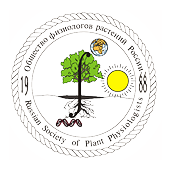06 марта, 2020

A signal cascade originated from epidermis defines apical-basal patterning of Arabidopsis shoot apical meristems
Here uncover that epidermis specific transcription factors, ARABIDOPSIS THALIANA MERISTEM LAYER 1 (ATML1) and its close homolog, define the concentration gradient of HAM (HAIRY MERISTEM) in the SAM (shoot apical meristem) through activating a group of microRNAs. This study provides a molecular framework linking the epidermis-derived signal to the stem cell homeostasis in plants.
https://www.nature.com/
Микроклоны деревьев растут на наночастицах
Препарат из наночастиц убивает опасные грибки и стимулирует рост саженцев, полученных микроклональным методом.
https://www.nkj.ru/news/38109/
Laterals take it better – Emerging and young lateral roots survive lethal salinity longer than the primary root in Arabidopsis
These data demonstrated a position-dependent resistance of Arabidopsis young LR to high salinity. This response can lead to identification of novel salt stress.
https://www.nature.com/
Растения придирчивы к свету
Чтобы растения в теплице дали максимальный урожай, им нужно правильно подобрать свет.
https://www.nkj.ru/news/38100/
Genetic analysis of the Arabidopsis TIR1/AFB auxin receptors reveals both overlapping and specialized functions
The Arabidopsis genome encodes six TIR1/AFB proteins representing three of the four clades that were established prior to angiosperm radiation. To determine the role of these proteins in plant development we performed an extensive genetic analysis involving the generation and characterization of all possible multiply-mutant lines.
https://elifesciences.org/
Ecological strategies begin at germination: traits, plasticity, and survival in the first four days of plant life
Larson et al. assess whether traits vary in ecologically‐meaningful ways when seedlings are just days old. How do shared evolutionary history and environmental conditions shape trait expression, and can traits explain which seedlings endure drought?
https://besjournals.
Early developmental plasticity of lateral roots in response to asymmetric water availability
Scientists report that the radial positioning of emerging lateral roots is influenced by their hydrological environment during early developmental stages.
https://www.nature.com/
Reticulon proteins modulate autophagy of the endoplasmic reticulum in maize endosperm
Reticulon (Rtn) proteins shape tubular domains of the endoplasmic reticulum (ER), and in some cases are autophagy receptors for selective ER turnover. Zhang et al. have found that maize Rtn1 and Rtn2 control ER homeostasis and autophagic flux in endosperm aleurone cells, where the ER accumulates lipid droplets and synthesizes storage protein accretions metabolized during germination.
https://elifesciences.org/
How plant cells sense the outside world through hydrogen peroxide
The discovery of a sensor that detects hydrogen peroxide at the surface of a cell provides insights into the mechanisms by which plant cells perceive and respond to environmental stress.
https://www.nature.com/
Auxin perception in Agave is dependent on the species’ Auxin Response Factors
Auxin response factors (ARFs) showed differential species-specific expression patterns in the presence of indole-3-acetic acid (IAA) and 2,4-dichlorophenoxyacetic acid (2,4-D). Interestingly, A. angustifolia showed different phenotypes in the presence and absence of auxins. In the absence of auxin, A. angustifolia produces roots, while shoots are developed in the presence of IAA. However, in the presence of 2,4-D, the plant meristem converts into callus.
https://www.nature.com/
Advances in the biosynthesis, regulation, and metabolic engineering of plant specialized terpenoids
Specialized terpenoids are natural products synthesized by plants that have no
obvious role in growth and development, but play many important functional roles to
improve the plant's overall fitness.
https://www.sciencedirect.com/
Stories of Salicylic Acid: A Plant Defense Hormone
Salicylic acid (SA) is a key plant hormone required for establishing resistance to
many pathogens. SA biosynthesis involves two main metabolic pathways with
multiple steps: the isochorismate and the phenylalanine ammonia-lyase pathways.
https://www.sciencedirect.com/
Metabolic flux analysis of secondary metabolism in plants
Numerous secondary metabolites from plants are important for their medicinal, nutraceutical or sensory properties. Recently, significant progress has been made in the identification of the genes and enzymes of plant secondary metabolic pathways.
https://www.sciencedirect.com/
Evolution of Plant Hormone Response Pathways
This review focuses on the evolution of plant hormone signaling pathways. Like the chemical nature of the hormones themselves, the signaling pathways are diverse. Therefore, Blázquez et al. focus on a group of hormones whose primary perception mechanism involves an Skp1/Cullin/F-box-type ubiquitin ligase: auxin, jasmonic acid, gibberellic acid, and strigolactone.
https://www.annualreviews.org/
Actin filaments control the shape of the cell structure that divides plant cells
Scientists found that disruption of actin filaments by LatB (latrunculin B) caused the membrane vesicles at the equatorial plane of the cell plate to be dispersed rather than form clusters as they did in the untreated cells.
https://www.eurekalert.org/
Newly discovered driver of plant cell growth contradicts current theories
Haas et al. postulated that HG (homogalacturonan) are multi-subunit structures that, when demethylated, shift from their crystalline state into a swelling state that leads to wall expansion and growth of "lobes" on the pavement cells. They validated their hypothesis in models whereby they simulated lobe development in cotyledon and induced demethylation of pectin components in the cell wall. This altered the plant cell shape despite the absence of hydration and turgor pressure.
https://www.eurekalert.org/
Новости науки и практики // Март 2020

Putting a finger on plant stress response
Researchers from the University of Tsukuba show that a zinc finger domain in Arabidopsis protein SIZ1 is essential for transcriptional regulation of genes required for abiotic stress responses.
https://www.eurekalert.org/
Researchers from the University of Tsukuba show that a zinc finger domain in Arabidopsis protein SIZ1 is essential for transcriptional regulation of genes required for abiotic stress responses.
https://www.eurekalert.org/
A signal cascade originated from epidermis defines apical-basal patterning of Arabidopsis shoot apical meristems
Here uncover that epidermis specific transcription factors, ARABIDOPSIS THALIANA MERISTEM LAYER 1 (ATML1) and its close homolog, define the concentration gradient of HAM (HAIRY MERISTEM) in the SAM (shoot apical meristem) through activating a group of microRNAs. This study provides a molecular framework linking the epidermis-derived signal to the stem cell homeostasis in plants.
https://www.nature.com/
Микроклоны деревьев растут на наночастицах
Препарат из наночастиц убивает опасные грибки и стимулирует рост саженцев, полученных микроклональным методом.
https://www.nkj.ru/news/38109/
Laterals take it better – Emerging and young lateral roots survive lethal salinity longer than the primary root in Arabidopsis
These data demonstrated a position-dependent resistance of Arabidopsis young LR to high salinity. This response can lead to identification of novel salt stress.
https://www.nature.com/
Растения придирчивы к свету
Чтобы растения в теплице дали максимальный урожай, им нужно правильно подобрать свет.
https://www.nkj.ru/news/38100/
Genetic analysis of the Arabidopsis TIR1/AFB auxin receptors reveals both overlapping and specialized functions
The Arabidopsis genome encodes six TIR1/AFB proteins representing three of the four clades that were established prior to angiosperm radiation. To determine the role of these proteins in plant development we performed an extensive genetic analysis involving the generation and characterization of all possible multiply-mutant lines.
https://elifesciences.org/
Ecological strategies begin at germination: traits, plasticity, and survival in the first four days of plant life
Larson et al. assess whether traits vary in ecologically‐meaningful ways when seedlings are just days old. How do shared evolutionary history and environmental conditions shape trait expression, and can traits explain which seedlings endure drought?
https://besjournals.
Early developmental plasticity of lateral roots in response to asymmetric water availability
Scientists report that the radial positioning of emerging lateral roots is influenced by their hydrological environment during early developmental stages.
https://www.nature.com/
Reticulon proteins modulate autophagy of the endoplasmic reticulum in maize endosperm
Reticulon (Rtn) proteins shape tubular domains of the endoplasmic reticulum (ER), and in some cases are autophagy receptors for selective ER turnover. Zhang et al. have found that maize Rtn1 and Rtn2 control ER homeostasis and autophagic flux in endosperm aleurone cells, where the ER accumulates lipid droplets and synthesizes storage protein accretions metabolized during germination.
https://elifesciences.org/
How plant cells sense the outside world through hydrogen peroxide
The discovery of a sensor that detects hydrogen peroxide at the surface of a cell provides insights into the mechanisms by which plant cells perceive and respond to environmental stress.
https://www.nature.com/
Auxin perception in Agave is dependent on the species’ Auxin Response Factors
Auxin response factors (ARFs) showed differential species-specific expression patterns in the presence of indole-3-acetic acid (IAA) and 2,4-dichlorophenoxyacetic acid (2,4-D). Interestingly, A. angustifolia showed different phenotypes in the presence and absence of auxins. In the absence of auxin, A. angustifolia produces roots, while shoots are developed in the presence of IAA. However, in the presence of 2,4-D, the plant meristem converts into callus.
https://www.nature.com/
Advances in the biosynthesis, regulation, and metabolic engineering of plant specialized terpenoids
Specialized terpenoids are natural products synthesized by plants that have no
obvious role in growth and development, but play many important functional roles to
improve the plant's overall fitness.
https://www.sciencedirect.com/
Stories of Salicylic Acid: A Plant Defense Hormone
Salicylic acid (SA) is a key plant hormone required for establishing resistance to
many pathogens. SA biosynthesis involves two main metabolic pathways with
multiple steps: the isochorismate and the phenylalanine ammonia-lyase pathways.
https://www.sciencedirect.com/
Metabolic flux analysis of secondary metabolism in plants
Numerous secondary metabolites from plants are important for their medicinal, nutraceutical or sensory properties. Recently, significant progress has been made in the identification of the genes and enzymes of plant secondary metabolic pathways.
https://www.sciencedirect.com/
Evolution of Plant Hormone Response Pathways
This review focuses on the evolution of plant hormone signaling pathways. Like the chemical nature of the hormones themselves, the signaling pathways are diverse. Therefore, Blázquez et al. focus on a group of hormones whose primary perception mechanism involves an Skp1/Cullin/F-box-type ubiquitin ligase: auxin, jasmonic acid, gibberellic acid, and strigolactone.
https://www.annualreviews.org/
Actin filaments control the shape of the cell structure that divides plant cells
Scientists found that disruption of actin filaments by LatB (latrunculin B) caused the membrane vesicles at the equatorial plane of the cell plate to be dispersed rather than form clusters as they did in the untreated cells.
https://www.eurekalert.org/
Newly discovered driver of plant cell growth contradicts current theories
Haas et al. postulated that HG (homogalacturonan) are multi-subunit structures that, when demethylated, shift from their crystalline state into a swelling state that leads to wall expansion and growth of "lobes" on the pavement cells. They validated their hypothesis in models whereby they simulated lobe development in cotyledon and induced demethylation of pectin components in the cell wall. This altered the plant cell shape despite the absence of hydration and turgor pressure.
https://www.eurekalert.org/
Новости
Новости науки и практики // Июль 2024
Обзор научных новостей, опубликованных во всемирной паутине за последний месяцНовости науки и практики // Июнь 2024
Обзор научных новостей, опубликованных во всемирной паутине за последний месяцНовости науки и практики // Май 2024
Обзор научных новостей, опубликованных во всемирной паутине за последний месяцПодписка на новости ОФР



Объявления
Записей не найдено.



